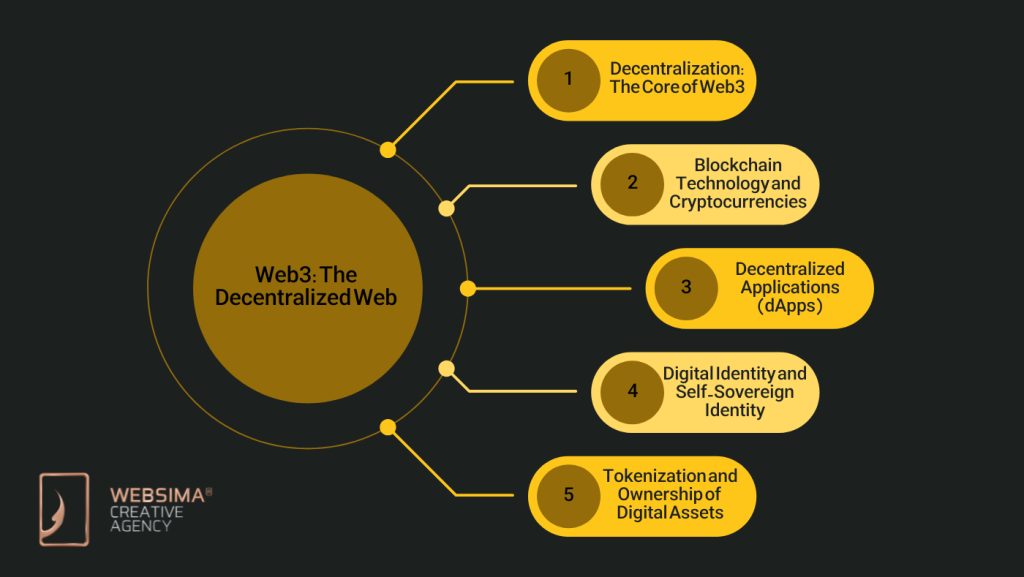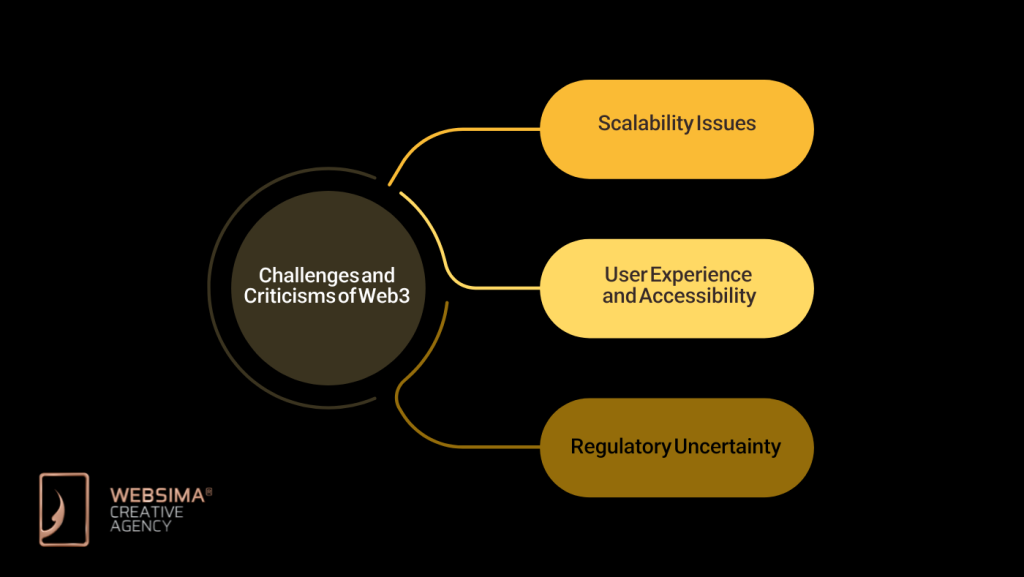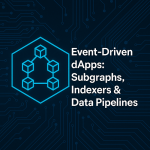The internet has gone through multiple stages of evolution, from its humble beginnings in the 1990s (Web1) to the dynamic, user-centric Web2. Now, we stand on the brink of another revolution in how we interact with the digital world: Web3. But what is Web3? Simply put, Web3 represents the next iteration of the internet, driven by decentralization, blockchain technology, and a shift in how data and assets are controlled and exchanged.
The revolution of Web3 gaming has just launched!Something that will change the gaming narrative forever. $TTG is born. What comes next is beyond imagination. @TaitikoOfficial @Taitiko
CA:4ELGifwr2jHtEaFZUXXvQLAYiE6W5bvpWYZbJTRSpump pic.twitter.com/SyJoATKlsF— Dreamcatcher (@La_Filoxera) February 19, 2025
In this beginner’s guide, we’ll walk you through the key aspects of Web3, its underlying technologies, and how it promises to reshape our online experiences. Whether you’re an investor, a developer, or just a curious internet user, understanding Web3 will give you a glimpse into the future of the digital world.
Web1: The Static Web
Before diving into Web3, it’s essential to understand the evolution of the internet. Let’s start by looking at Web1, the internet as it originally existed.
1. The Early Days of the Internet
In the early days of the internet (roughly from the 1990s to the early 2000s), Web1 was characterized by static, read-only websites. These websites were simple, often with basic text and images, and users could only consume content passively. There was no interactivity or personalization; it was a one-way street, where information flowed from websites to users.
2. Lack of User Control
With Web1, most of the content was centralized on servers owned by companies or individuals. There were no dynamic interactions or user-generated content. The control was completely in the hands of website owners, and users had minimal control over their data.
Web2: The Social Web
Fast forward to the early 2000s, when Web2 emerged. This was a major turning point for the internet, as it introduced the era of user-generated content, social media, and more interactive experiences.
1. Rise of Social Media
Web2 saw the advent of social media platforms like Facebook, Twitter, and Instagram. These platforms allowed users to create profiles, post content, and interact with others in real-time. Unlike Web1, which was largely read-only, Web2 made the internet a dynamic, participatory space.
2. User-Generated Content and Centralized Control
In Web2, companies such as Facebook, Google, and Amazon began to control large portions of the internet. These platforms relied on centralized servers, and they collected vast amounts of personal data from users. While users could engage with the platforms and contribute content, they had little control over their data and were often subjected to the rules and decisions of these tech giants.
3. Monetization and Data Exploitation
One of the defining characteristics of Web2 is how companies monetize user data. Platforms track user behavior to serve targeted ads, generate profits, and maintain a centralized business model. While this allowed for massive innovation, it also raised serious concerns about privacy, data ownership, and corporate control over the internet.
Web3: The Decentralized Web
Are you curious about Web3 but don’t know where to start?
If YES, this thread is for you. Let’s explore what Web3 is, how it evolved, and how YOU can navigate it as a beginner
What is Web3?
Web3 is the next evolution of the internet, built on blockchain technology. It allows…— Shola (@itsSh0la) December 13, 2024
So, what is Web3 and how does it differ from the previous versions of the web? Web3 is a vision for a new, decentralized internet. It aims to shift the balance of power away from centralized authorities (like tech companies) and place control in the hands of individuals. The core idea behind Web3 is that users should have more control over their data, assets, and digital identity.

1. Decentralization: The Core of Web3
At its core, Web3 is built on blockchain technology, which enables decentralization. Unlike traditional, centralized systems where data is stored on servers controlled by a single entity, Web3 uses decentralized networks of nodes (computers) that collectively manage and validate data. This means that no single party has control over the system, which promotes transparency, security, and trust.
Blockchain technology ensures that transactions and data are immutable, meaning once something is recorded, it cannot be altered or tampered with. This offers greater security and reliability, especially when it comes to digital transactions, identity management, and data privacy.
2. Blockchain Technology and Cryptocurrencies
Blockchain is the foundational technology behind Web3. A blockchain is essentially a decentralized, distributed ledger that records transactions in a secure, transparent, and tamper-proof manner. Each block contains a list of transactions, and these blocks are linked together in chronological order, forming a chain.
One of the most famous applications of blockchain technology is cryptocurrencies like Bitcoin and Ethereum. In Web3, cryptocurrencies and digital tokens enable users to exchange value and assets directly, without needing intermediaries like banks. These cryptocurrencies are powered by blockchain and ensure secure, peer-to-peer transactions.
Beyond cryptocurrencies, blockchain enables smart contracts—self-executing contracts with the terms of the agreement directly written into code. Smart contracts automate processes and eliminate the need for intermediaries, reducing costs and increasing efficiency.
3. Decentralized Applications (dApps)
In Web3, decentralized applications (dApps) are the next evolution of traditional apps. Unlike traditional applications, which rely on centralized servers, dApps run on decentralized networks powered by blockchain technology. These apps are more transparent, secure, and resistant to censorship, as no single entity controls them.
For example, instead of using a traditional social media platform controlled by a company (like Facebook), Web3 introduces decentralized social platforms built on blockchain, where users can interact without central authority interference. These platforms give users greater control over their data, monetization, and how their content is shared.
Dubai is becoming a hub for decentralized applications (dApps), as the leading city to adopt Web3 and blockchain across the globe
4. Digital Identity and Self-Sovereign Identity
A key feature of Web3 is the concept of self-sovereign identity (SSI). In traditional web experiences, our digital identities are controlled by centralized entities, such as social media companies and email providers. These platforms store personal data, and users rely on these platforms to authenticate and manage their online presence.
In Web3, users have full ownership of their digital identities. They can create a verifiable digital identity using blockchain technology, which allows them to maintain control over their personal information. This is particularly important in the context of privacy and data ownership, as Web3 eliminates the need to trust third-party companies with sensitive information.
5. Tokenization and Ownership of Digital Assets
Web3 also introduces the concept of tokenization, which allows digital assets (such as art, music, videos, or even real estate) to be represented as tokens on a blockchain. These tokens can be bought, sold, or traded on decentralized marketplaces. Tokenization offers a new way for creators to monetize their work directly, without relying on intermediaries like galleries, record labels, or auction houses.
This democratization of ownership is revolutionary. For example, Non-Fungible Tokens (NFTs) are a form of tokenized digital asset that proves ownership and authenticity of digital content. Artists and creators can sell their work directly to consumers, and buyers can prove ownership of unique, one-of-a-kind digital items.
Considering this unique feature of NFTs, Dubai’s luxury market is integrating NFTs into exclusive products, in order to ensure authenticity and ownership for wealthy customers.
The Benefits of Web3
Web3 presents several advantages over Web2, especially in areas like security, privacy, and user control.

1. Enhanced Security and Privacy
With Web3’s decentralized nature, there is no central point of failure, making it harder for hackers to target a single entity. Additionally, users have greater control over their personal data, which means they can decide what to share and with whom. This reduces the risks of data breaches and identity theft, which are increasingly common in Web2 platforms.
2. Ownership and Control
Web3 empowers users by giving them ownership of their data and digital assets. Instead of relying on centralized platforms to store and control your information, Web3 lets you control your digital identity, assets, and personal data. This is a major shift away from the business model in Web2, where companies profit by collecting and monetizing user data.
3. Censorship Resistance
In a decentralized system, there is no central authority that can censor or control content. This makes Web3 applications particularly appealing for free speech, creative freedom, and financial inclusion. Whether it’s posting content on a decentralized social media platform or engaging in financial transactions through decentralized finance (DeFi), Web3 promotes openness and resistance to censorship.
4. Improved Monetization for Creators
Web3 enables new ways for creators to monetize their work. By tokenizing content (such as through NFTs), creators can sell their work directly to consumers, bypassing intermediaries. This opens up new revenue streams and gives creators more control over their income.
Challenges and Criticisms of Web3
While Web3 offers many exciting possibilities, it is still in its early stages, and there are some challenges that need to be addressed.

1. Scalability Issues
Blockchain technology, particularly Ethereum, currently faces scalability challenges. The process of validating transactions on the blockchain can be slow and costly, especially when demand is high. This could hinder the widespread adoption of Web3 applications unless solutions like layer 2 scaling and sharing are implemented effectively.
2. User Experience and Accessibility
The user experience (UX) of Web3 applications is often more complex than traditional Web2 apps. For instance, managing private keys, using crypto wallets, and interacting with decentralized apps can be intimidating for the average user. To make Web3 accessible to a broader audience, developers need to focus on improving the UX/UI design and creating more intuitive interfaces.
3. Regulatory Uncertainty
The decentralized nature of Web3 presents challenges for regulators. Governments and regulatory bodies are still figuring out how to manage decentralized financial systems, cryptocurrencies, and other aspects of Web3. This uncertainty could pose risks for investors and companies operating in the Web3 space.
Final Thoughts
In conclusion, what is Web3? It’s the next evolution of the internet, driven by decentralization, blockchain technology, and a shift in how data, assets, and identities are controlled. Web3 promises to give users more control over their digital lives, enhance security, reduce censorship, and create new economic opportunities. While still in its early stages, Web3 has the potential to transform the internet as we know it, creating a more user-centric, transparent, and decentralized digital ecosystem.
Websima, as the leading blockchain service provider in Dubai, is more than happy to help, if you are planning to start a blockchain-based business in Dubai. Blockchain, crypto and web3 web and website development, smart contract programming and development, Blockchain, Web3 and crypto company establishment are just a few out of many services that we provide. Feel free to contact us to book for a free consultation meeting with our talented team.





